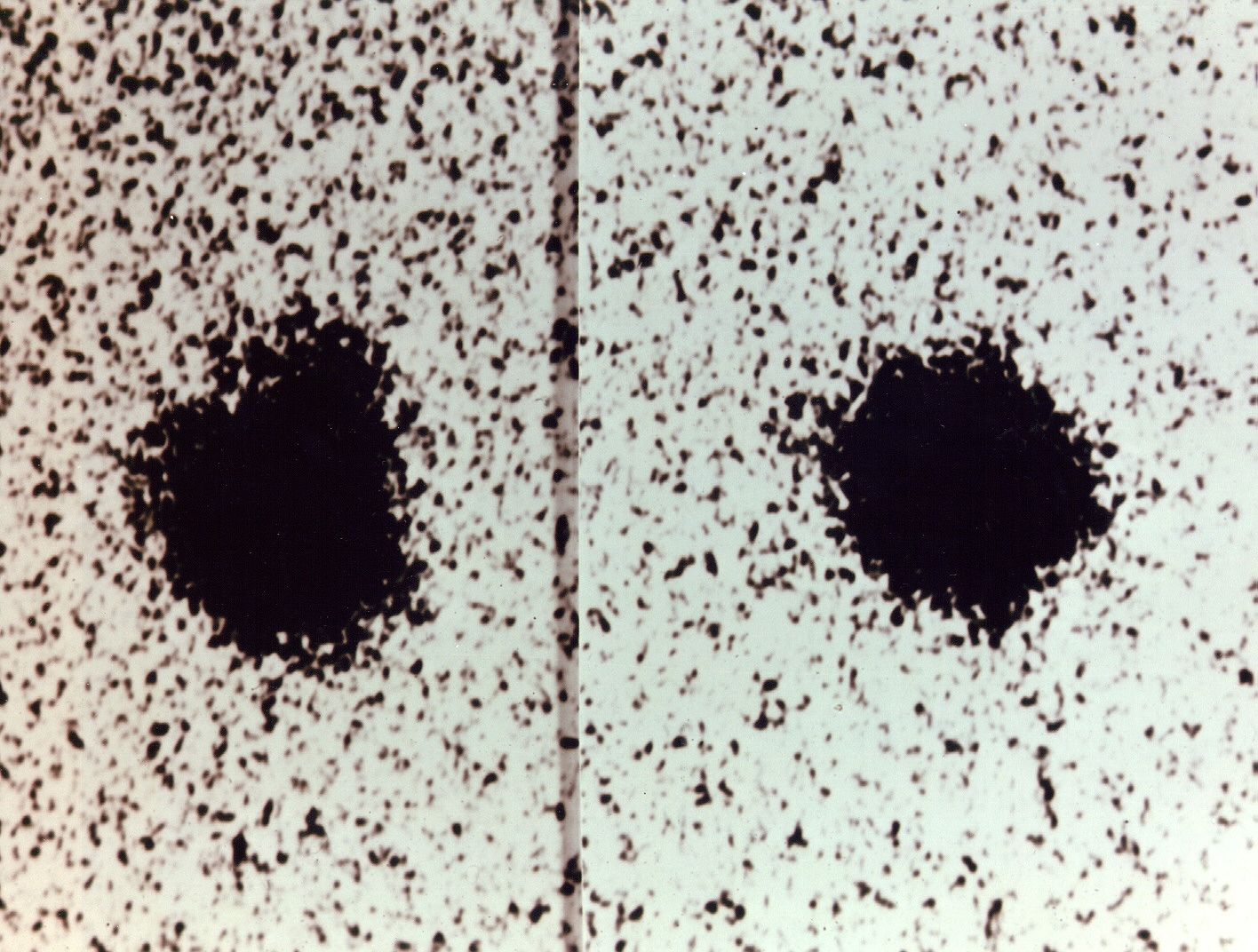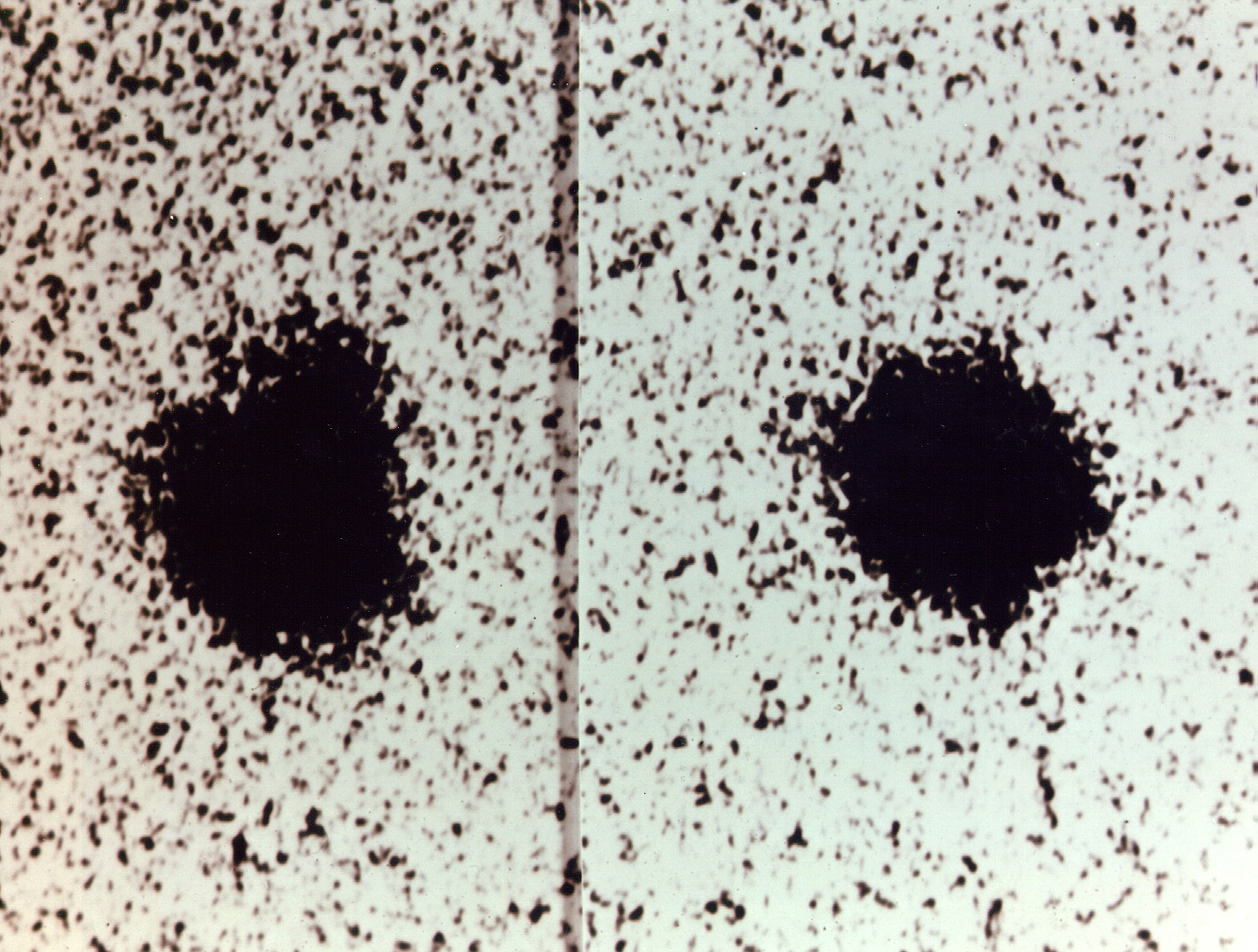Charon Discovery Image

| Credit | U.S. Naval Observatory |
|---|---|
| Language |
|
U.S. Naval Observatory astronomer James W. Christy noticed something unusual while making routine measurements of photographic plates of Pluto taken with the 1.55-m (61-inch) Kaj Strand Astrometric Reflector at the USNO Flagstaff Station in Arizona. The purpose of these images was to refine the orbit of the far-flung dwarf planet Pluto to help compute a better ephemeris for this distant object.
Christy had noticed that a number of the images of Pluto appeared elongated, but images of background stars on the same plate did not. Other plates showed the planet as a tiny, round dot. Christy examined a number of Pluto images from the USNO archives, and he noticed the elongations again. Furthermore, the elongations appeared to change position with respect to the stars over time. After eliminating the possibility that the elongations were produced by plate defects and background stars, the only plausible explanation was that they were caused by a previously unknown moon orbiting Pluto at a distance of about 19,600 km (12,100 miles) with a period of just over six days.
On 7 July 1978, the discovery was formally announced to the astronomical community and the world by the IAU Central Bureau for Astronomical Telegrams via IAU Circular 3241. The discovery received the provisional designation "1978 P 1;" Christy proposed the name "Charon", after the mythological ferryman who carried souls across the river Acheron, one of the five mythical rivers that surrounded Pluto's underworld.
Over the course of the next several years, another USNO astronomer, the late Robert S. Harrington, calculated that Pluto and its newly-found moon would undergo a series of mutual eclipses and occultations, beginning in early 1985. On 17 February 1985 the first successful observation of one of these transits was made with the 0.9-m (36-inch) reflector at the University of Texas McDonald Observatory, within 40 minutes of Harrington's predicted time. The IAU Circular announcing these confirming observations was issued on 22 February 1985. With this confirmation, the new moon was officially named Charon.
Pluto was discovered at Lowell Observatory in 1930 by Clyde W. Tombaugh, an amateur astronomer from Kansas who was hired by the Observatory specifically to photograph the sky with a special camera and search for a hypothetical planet predicted by the Observatory's founder, Percival Lowell.
Lowell had deduced the existence of a "Planet X" by studying small anomalies in the orbits of Uranus and Neptune. As it turned out, Pluto's discovery was almost entirely serendipitous; Pluto's tiny mass was far too small to account for the anomalies, which were resolved when Voyager 2 determined more precise masses for Uranus and Neptune.
Pluto and Charon circle their common center of mass with a period of 6.387 days and are locked in a "super-synchronous" rotation: observers on Pluto's surface would always see Charon in the same part of the sky relative to their local horizon.
During the period from January 1979 until February 1999 Pluto was actually closer to the Sun than Neptune. It has a more eccentric and inclined orbit than any of the major planets. This orbit won't bring Pluto back to its discovery position until the year 2178.

